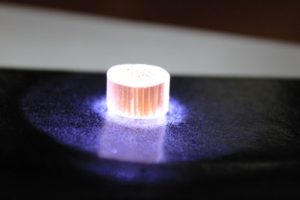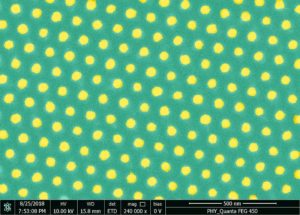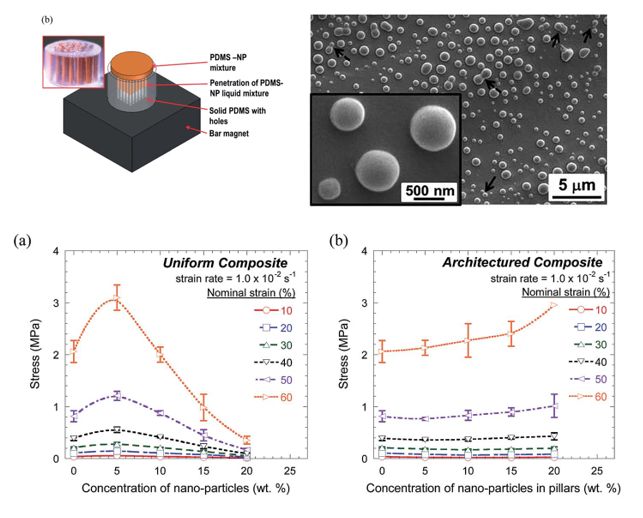At small length scales the structure of the material is organized in certain architectural fashion along with specific chemical composition. This arrangement in nature leads to extraordinary mechanical characteristics. The materials with highly ordered architectures open up the possibility of engineering the mechanical response for various practical applications including control of structural vibrations, noise, and shock mitigation. Therefore, these tunable materials are called mechanical metamaterials. We design and test these metamaterials at various length scales. Designing of materials (metamaterials) with artificial lattice for high mechanical strength at varying strain rates, novel optoelectronic interactions are the core research areas on this topic. My group activities in these areas involved both simulations and experimental validation of the designed materials.
Novel architecture for anomalous strengthening of a particulate filled polymer matrix composite
Figure: Magnet arrangement employed while pouring the liquid mixture of PDMS pre-form and NPs into PDMS with holes sample. The inset shows a digital picture of the architectured composite where the dark regions are pillars containing iron oxide NPs. Load bearing capacity of (a) uniform and (b) architectured composites at various strains as function of the concentration of NPs.
Reference: RSC Adv., 2015, 5, 62477–62485
https://doi.org/10.1039/C5RA10714H
Periodic Architecture for High Performance Shock Absorbing Composites
Figure: Time-sequence photographs of a shortened composite sample. The wide arrows show the direction of loading at a given time-sequence, whereas the broken arrows show the movement of a ball as the loading and unloading occurs. One type of arrow show sequential movement of one ball. The time between different frames is not the same. Only two pictographs during unloading is shown as the unloading sequences were identical to the corresponding loading sequence. High strain rate effects on PDMS-steel ball composites. energy dissipated due to the stress-strain hysteresis for all samples tested at the strain rate of 0.05 per s.
Reference: Scientific Reports, Article number: 2056, 2013
http://dx.doi.org/10.1038/srep02056




